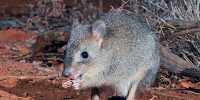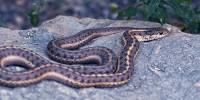In the busy work of building a home (pigeons are famously terrifying at it) and in a competitive environment, it pays to be creative while sourcing materials for your upcoming teens. Although many of us associate homes with stalks and leaves, a new study sheds light on a less passive form of resource collection practiced by some daring birds: stealing living animal hair.
That’s right, in a new study (strategically titled “What stains? Stealing mammal hair by birds is a neglected but common behavior with fitness effects”) that has been adopted for publication in the journal Ecology, the authors explored the use of mammals in bird houses.
In particular, they wanted to review an example of a behavior that they call “kleptotrichy” (Greek “stealing” (klepto) and “hair” (trich)), through which birds tear the fur of living creatures. The paper’s researchers became interested in the behavior after a cluster of titmouse (Baeolophus bicolor) approached a sleeping raccoon for four minutes before relieving some of its fur-ridden creatures. It crossed their minds that the raccoon was probably dead, but a closer inspection confirmed that it was alive, only Snooze.
Although they believe this is the only example of such behavior in peer-reviewed literature, a quick search on YouTube shows that this is not the first time that a raccoon has inadvertently facilitated the creation of a comfortable home. Curious to see if this criminal behavior was widespread, they searched the academic literature for several keywords related to birds, mammals, and hair theft. Their results included 11 incidents across six species in peer-reviewed literature. More than half of the hairy booty was by clusters of cubs who stole the hair of several mammals, including humans.
Because of Titmouse’s apparent fondness for kleptotrichy, the researchers went to YouTube to see if they could find further evidence of the birds’ behavior. Certainly, their search yielded 99 examples from the Paridae species, the family of birds that belong to the titmice. Among the helpless victims were dogs, cats, humans, raccoons, and even a pig, and revealed that not much was found in the world of the published academy although the behavior seemed quite familiar to the general public. While kleptotrichy may seem a bit risky, most mammals involved can probably kill a bird if they want to, reviews have shown that in most cases unintentional groomee didn’t really pay attention or notice what was happening.















